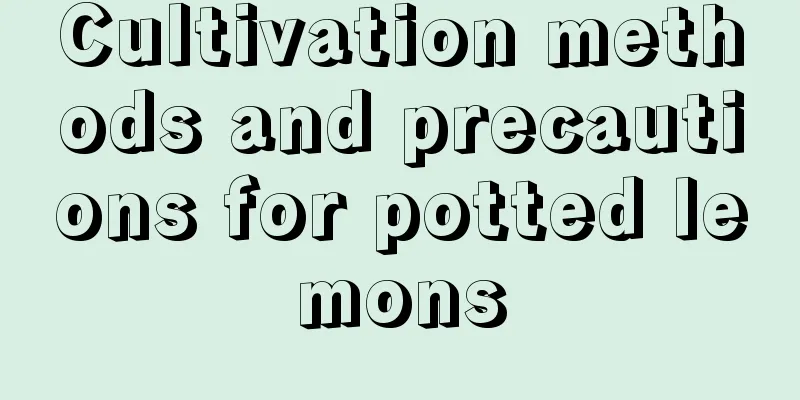Cultivation methods and precautions for potted lemons

Cultivation methods and precautions for potted lemonsThe cultivation method of potted lemon mainly lies in the following aspects: Spring pruning and repottingPotted lemons grow healthily, so pruning is necessary to ensure better growth. The best time to prune is in spring. At this time, you should combine repotting with spring pruning to cut off dead branches and leaves, diseased and insect-infested roots and leaves, and overgrown branches so that the plants can grow and bear fruit. For potted lemon flowers, the soil should be changed between March and April during the Spring Festival to increase the nutrients needed for growth and increase the growth of the plants. PrecautionsWhen pruning, be careful not to cut the main branches and tender branches and leaves. When repotting, choose a pot that is suitable for the size of the lemon plant, not too big or too small. When changing the soil, apply base fertilizer to the bottom of the pot. Reasonable fertilizationBefore the lemon plant blooms and after it bears fruit, it is necessary to apply top dressing. Apply multi-element flower fertilizer once every month and spray flower nutrient solution once every half a month. PrecautionsThe fertilizer used for fertilization is multi-element flower fertilizer. Do not apply other fertilizers to avoid damaging the roots and affecting growth. Apply fertilizer in moderation and according to the growth trend. Apply more fertilizer to large plants and less fertilizer to small plants. Pest and disease controlHot summer and cool autumn are seasons when pests and diseases are prevalent. In such cases, reasonable prevention and control should be carried out. To prevent and control diseases and insect pests, just spray the anther once every half a month. PrecautionsPlease be careful when spraying. The best time to spray is around 9 am or around 4 pm. Do not spray under the scorching sun at noon, otherwise pesticide damage is likely to occur. |
<<: The succulents at home never turn color, what should I do?
Recommend
How to keep Jade Dew
Step by step diagram First, find a round (square ...
How to sterilize the soil for growing flowers (the best way to sterilize the soil for growing flowers)
How to disinfect the soil before planting flowers...
Can tulips be hydroponically cultivated? Hydroponics cultivation methods and precautions
Can tulips be grown hydroponically? Tulip is a pe...
How to grow lilies
1. Choose a pot If you want to plant lilies in po...
Do sunflowers need watering every day?
Do you water sunflowers every day? Sunflowers do ...
How to grow Jade Plant to make it bloom
Jade leaves bloom The Jade Plant usually blooms i...
Cultivation methods and precautions of peony
1. Breeding methods 1. Soil: If you want to grow ...
The growing environment and local conditions of the peach tree
Growth environment and conditions of small peach ...
What fertilizer is good for tiger skin orchid
Compound Fertilizer Generally speaking, we cannot...
Why are the leaves of the spider plant turning black? How to remedy the limp leaves of the spider plant
1. Why are the leaves turning black? 1. The light...
Common problems with rubber tree pruning
When is the best season to prune rubber trees? Ev...
How to Grow a Soft Branch Tea Tree
1. Prepare the soil Preparations should be made b...
The difference between the city that never sleeps and the city that never sleeps
The colors of the Never Sleeping City and the Nev...
How to grow Dutch chrysanthemums on the balcony, what should be paid attention to
1. Lighting requirements The plant of chrysanthem...
Cultivation methods and precautions of stinking begonia
The stinking begonia is very easy to grow. There ...









